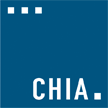For Mass. pharmacies, the largest amount of drug spending came from anti-inflammatory medicine, study suggests

DATE: February 13, 2020
Thursday, February 13, 2020 via MassLive Media - The majority of prescription drug spending for pharmacies between 2015 and 2017 went to medications treating inflammatory disorders, cardiovascular illnesses, asthma and other conditions, according to a study released Thursday by the Center for Health Information and Analysis.
The study, which analyzed a subset of commercial pharmacy claims from the agency’s All Payer Claims Database, suggests that the largest proportion of spending came from anti-inflammatory immunosuppressive drugs, which are commonly used to treat Crohn’s disease or rheumatoid arthritis. Those medications cost thousands of dollars per prescription.
Altogether, the study identifies 10 drug classes that account for more than 70 percent of pharmacy expenditures, according to the sample data CHIA analyzed.
In addition to anti-inflammatory drugs, the top drug classes include medication used to treat cardiovascular illnesses, behavioral health conditions, Crohn’s disease and other inflammatory conditions, viruses, asthma, hyperglycemia, central nervous system diseases and hormone-related conditions. The hormone drugs do not include contraceptives or thyroid medication.
“I think the prescription drug supply chain and the market for prescription drugs is a large and complex system,” said Greg Wheeler, a director of analytics at CHIA. “I think this publication what we’re looking to do is to try to peel back the layers to help consumers, policymakers, understand the market better.”
One of the anti-inflammatory drugs, Humira Pen, cost $3,809 a prescription in 2015. By 2017, the drug cost $5,183.
Based on the sample size CHIA analyzed, insurers consistently paid at least 98% of the cost. Patients paid under 2%, though the price for patients rose from $56 out-of-pocket in 2015 to $81 in 2017.
In the sample size CHIA analyzed, pharmacies submitted at least 60,895 claims for Humira Pen between 2015 and 2017. Altogether, these claims amounted to $275.2 million in bills for insurers. Patients were billed collectively $4.1 million out-of-pocket. The total figures are likely much higher as the data analyzed by CHIA cover just a subset of the claims.
Remicade, which treats ulcerative colitis, psoriatic arthritis and other inflammatory conditions, cost $5,237 in 2015 and $6,338 in 2017, according to the CHIA study.
Based on the sample size, insurers paid at least 98% of the cost, but patients still faced out-of-pocket costs. In 2017, for example, patients paid on average $81 out-of-pocket per prescription, though insurers paid $5,654.
Other drugs analyzed by CHIA that drove pharmacy drug costs included a larger share of out-of-pocket expenses for the patient, but cost much less.
One generic drug used to treat chest pain and high blood pressure, metoprolol succinate, cost $25 in 2015. Insurance covered $9 on average, while patients paid $16 out-of-pocket. Two years later, the drug cost $22 with insurers paying $7 on average, and patients paying the same.
Zetia, which is used to lower high cholesterol, cost $310 in 2015. Insurers paid on average $248 or 79.9%, while patients paid $62 or 20.1% out-of-pocket, according to the CHIA study. The cost shot up to $547 in 2017, but the analysis did not show the cost breakdown for that year.
The report focused on drugs that drove pharmacy spending, rather than the impact on patients. CHIA's annual report in October noted that health care costs in Massachusetts rose to $60.9 billion in 2018 and that out-of-pocket costs and premiums for consumers increased at twice the rate of inflation and wages.
By Steph Solis | MassLive
© 2020 Advance Local Media LLC.
